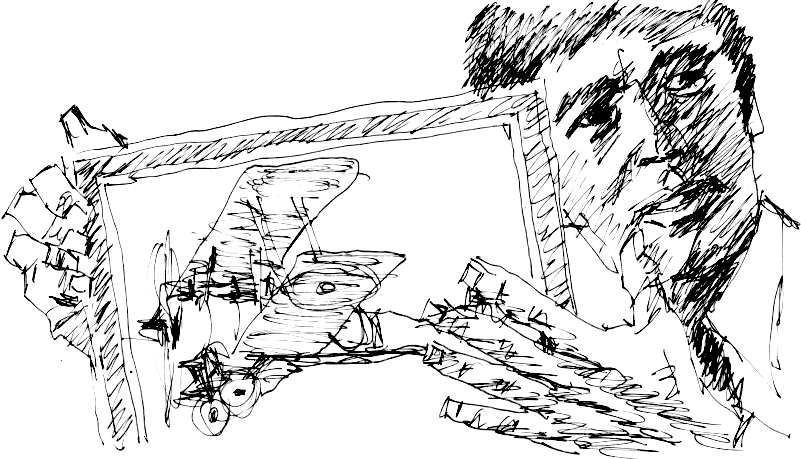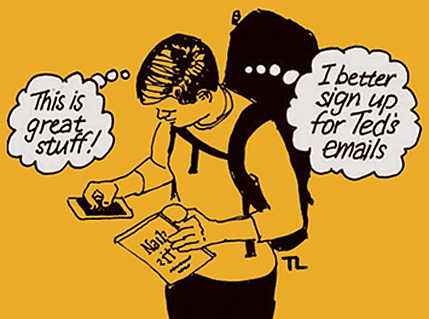Negotiations: Bully

Sometimes avoidance, is key to survival. Just like home.
I’d arrived.
Twenty-one and a newly hired design illustrator at Boeing.
Newly married and fully escaped from my adoptive family.
I was now part of a group supporting management’s effort to sell Boeing’s whole Turbine Division to another company.
Our little creative group — seven of us — created presentations and brochures to help management explain why the division was a perfect fit for another company.
The Turbine Division was like a fish out of water at Boeing. It made a turbine engine that was somehow too small for some uses and too large for others, making the overall market of future engine sales too small to be viable, at least for Boeing at the time. Boeing corporate intended to divest itself of the whole division to solve this.
My boss was a guy named Pete. I don’t think I ever met anyone more seemingly self-interested. Pete was in his most dangerous mode with us staffers when kissing up to senior management.
Dangerous and mean.
One morning, when we were madly finishing up a group of display charts, the division head, Tobias, stepped into our studio and, loudly so all could hear, announced, “Pete, we need the presentation at five to make our flight.” Usually calm and controlled, Tobias must have been stressed to the gills.
Before he could finish, Pete, picking up on his boss’s anxiety, was on his feet instantly, responding with, “We’re good. Would you like to take a quick look?”
That said, he stepped to our big worktable, where Larry, Pete’s number two, was reviewing the work. It was still morning, so we had plenty of time to make changes. As far as I knew, our work on this was all good. But Pete wanted to put on a show.
Flipping one of the charts over and taking a quick look, Pete turned to Larry with, “Wow, I didn’t think I’d have to explain this again, but here we are. Can you tell me what exactly you were thinking when you assembled this?”
Shaken, especially with Tobias watching, Larry stumbled out with, “Um… I was trying to respond quickly and…”
Pete, getting red-faced, almost shouted, “Quickly? Oh, fantastic. Because speed is obviously more important than accuracy, right? I mean, who cares if we look completely incompetent as long as you hit ‘print’ fast enough?”
Then Pete turned to Tobias and assured him that he, Pete, would have all the problems resolved in time. But we all knew this little display had nothing to do with our work. It was intended to show Pete’s mastery in the face of crisis.
And to add icing to the cake, Pete, now looking dramatically at his watch, says, “And Larry, get this done by noon so I can recheck your work and correct it before the guys come by at five.”
Now Tobias was heading for the door. Pete made it there first. He opened the door and, saying something in a whisper to Tobias, followed him out the door.
Larry, crushed and angry, began silently taking the deck apart. Turning to me, he said, “Ted, whip up a title page. We’ll add that to the top. Pete won’t know or care –– he just needs to do his dance. There’s nothing wrong with the rest of the deck.”
But despite Larry’s rational solution, I knew he was boiling inside.
When not promoting himself, Pete sat feet on his desk, tie loosened, bragging about his accomplishments and connections with ‘the big guys’ –– Boeing management.
His swagger feels so much like Dad I quickly learned to avoid him as much as possible. Mostly, I kept my head down and enjoyed the comradery of my fellow artists in the group.
Every workday morning, I put on my suit, perfectly fitted by a Hong Kong tailor, and drive my almost new Thunderbird past the company guard through the gate with the special pass that gave us access to VIP parking. Our little group was considered essential management support.
Pete made it known, almost daily, that our special status depended entirely on his esteemed position in the eyes of the division general manager and Boeing corporate management above.
Night and weekend work was the norm, pumping out a continuous chain of management presentations to potential division buyers. Pete was always critical and demanding –– his attacks, always personal.
Avoidance was key to survival. Just like home.
This was nothing new. Avoidance was how I managed my relationship with my adoptive father.
Realizing that our work was all about selling the division, I bravely asked Pete what would happen to us once our division was sold. He said something like, “Oh, we’ll be absorbed into one of the other internal creative groups in the company. I’ll make sure that happens.”
At some point in this little drama dance, Pete discovered that Tobias, the division GM, was a WWI bi-plane enthusiast. Remembering that I had an illustration of a biplane in my portfolio, he asked permission to show it to Tobias.
Naive and proud that my work had caught his eye, I happily handed Pete the illustration, which he tucked under his arm with a smile, and went off to the boss’s office.
That afternoon, I asked Pete what happened, and he said that the boss was out, and he’d left my work with his executive assistant. I worried a bit but put it aside.
As the days went by, I asked again several times, but beyond mildly asking, I was afraid to challenge Pete’s authority. The thought of going directly to Tobias occurred to me but seemed impossible. So I boiled inside and waited.
Then, one day, Pete handed me an oversized envelope with a smile and asked me to look inside. I opened it and pulled out a photographic copy of my work.
My worst fear was now confirmed. He’d given away my illustration to enhance his personal standing. I’d never get it back.
Pete told me that giving my illustration had enhanced our position. Given that our future employment hung on Tobias’ goodwill, we needed every bit of appreciation and support from the brass we could get.
I was heartbroken. The illustration had taken me weeks to research and paint. I was incredibly proud of it and considered it a core part of my portfolio.
Afraid of Pete, afraid of Tobias, afraid of the hierarchy of Boeing, I did nothing.
A few weeks later, it was review time, and I had to sit down with Pete to discuss my performance. He gave me a very low rating, saying, “I wasn’t a team player.”
I called in sick the following day and spent the time making appointments with local agencies and designers. Within a week or two, I had a new job and left the company.
A year later, some of my Boeing colleagues visited me. The division had sold to Caterpillar, and they had all been let go — all but Pete. He’d landed a senior position within one of the larger Boeing in-house creative groups.


7 Comments
The moral of the story is: Beware all peacocks when you tango with a writer!
Yep! You got that right, Diana. Thanks for your comment.
Very bush league, I’d say.
Yes and very big corporate survival thinking. I see the same behavior though my client’s practices today.
F***ing Pete.
Yes, thanks, Greg. I now know the bullies like Pete often do well in large organizations. They may not be liked, but they seem powerful. People fear them. And to those above them, it looks like they know how to get shit done.
Working with a narcissist: Keep the firewall up at all times.